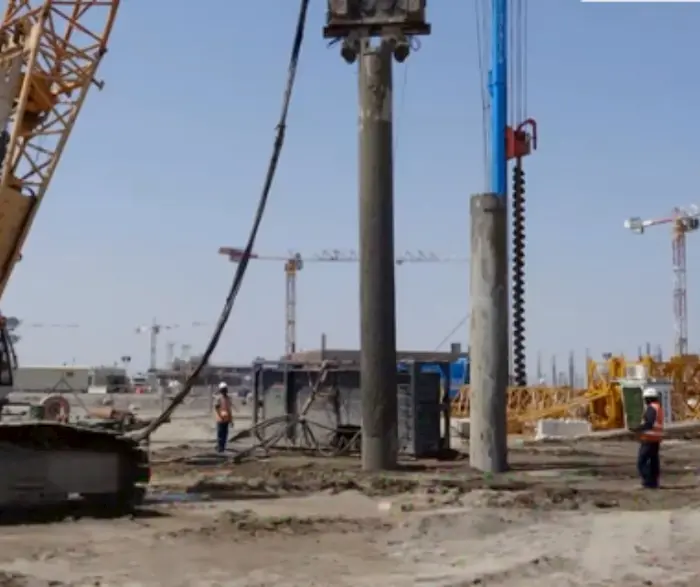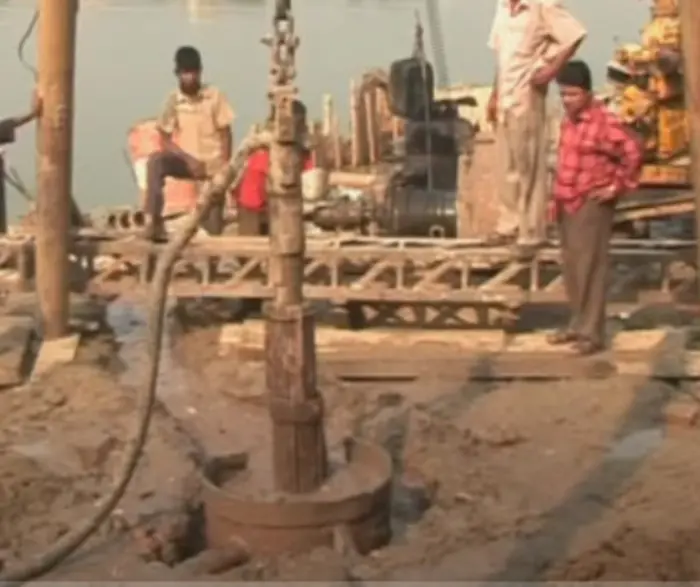Piles are one of the most common types of deep foundations. They transfer loads between the superstructure and the subsurface strata by friction, end bearing, or both. Today we will learn advantages and disadvantages of cast in situ concrete piles.
Cast in situ concrete pile is a type of concrete pile that plays a vital role in the construction industry. Whether it’s for the construction of commercial structures or residential homes, the cast-in-situ concrete pile is very popular. The process involves pouring liquid concrete into removable forms and dismantling them once the concrete hardens to make a solid wall.
There are so many different piling methods that it can be confusing for property owners. As a result, the type of foundation a building requires depends on the soil’s condition, its location, and the type of structure being built on it. As a means of clearing-up any confusion, we’ve decided to discuss some of Advantages and Disadvantages of Cast in Situ Concrete Piles. Here is a little more information about what you need to know…
What is Cast in Situ Concrete Piles?

A cast-in-situ pile is a concrete pile. Compared to drilled piers, these piles have a smaller diameter. It is constructed by digging holes in the ground, filling them with concrete, and then covering them with soil. There may be straight bored piles or piles with one or more bulbs at intervals cast on site. These piles are called under-reamed piles. In certain cases, reinforcement may be required.
Cast-in-situ piles are those which are cast in position within the ground. Cast-in-situ piles are not subjected to handling or driving stresses, so they do not require reinforcement in normal cases or where they are completely submerged. Cast-in-situ piles require reinforcement when they act as columns and are subjected to lateral forces. There are lots of advantages and disadvantages of cast in situ concrete piles.
Types of Cast in Situ Concrete Piles
As a general rule, there are 6 types of cast in situ piles which are described below:
1. Simplex Pile
2. Franki Pile
3. Vibro Pile
4. Vibro Expanded Pile
5. Raymond Pile
6. Mac Arthur Pedestal Pipe
Main Categories of Cast in Situ Concrete Pile
As we learn the advantages and disadvantages of cast in situ concrete piles let’s also learn its main categories. There are basically two types of cast in situ piles: they are cased and uncased situ piles. A cased concrete pile is made by driving a steel casing into the soil. In this case, the mandrel is inserted inside the casing. As soon as the mandrel reaches the desired depth, it’s withdrawn, and concrete is poured in. During the removal of the casing from uncased piles, the casing will be gradually removed.
Cased Cast-in-Situ Concrete Piles:
In this type of piles, the casing appears to be vertical, straight, and undamaged. However, the cost will rise since the casing will be kept along with the pile. It protects freshly placed concrete from ground pressures, intrusions, and movement as it sets. The shell lengths can easily be adjusted during installation to suit changing subsoil conditions.
Uncased Cast-in-Situ Concrete Piles:
This type of pile has no casing left behind in the ground, so it is comparatively more economical than other piles. Nevertheless, this result can only be achieved with skilled manpower. Uncased concrete piles are susceptible to damage caused by subsoil pressure, ground movements, and obstructions in the ground during pile driving. In this type of pile, close installation inspection is essential since piles cannot be inspected after installation and cannot be readily re-driven if they heave or swell.
Why Do You Need to Use Cast in Situ Concrete Piles?

A cast in situ concrete pile is one of the most important types of foundations and we already learn there are lots of advantages and disadvantages of cast in situ concrete piles. Despite their relatively high cost, they are essential when we want to transfer loads of heavy superstructures (bridges, high rise buildings, etc.) to the ground.
Cast in Situ Concrete Pile is also recommended because of the condition and quality of soil layers. A great example of how they can be made and installed is cast-in-situ concrete piles. The following conditions should be considered when choosing this pile:
- Poor soil quality in the upper layers
- A construction site with expansive soil
- In order to resist uplift forces
- In order to resist lateral loads (horizontal)
- Bridge abutments and piers
The Following Conditions Make the Construction Company Use Cast in Situ Concrete Piles
- Situ Piles are used when the soil at the construction site is extremely loose or soft.
- If the foundation size can’t be accommodated due to the loads being too high on the plan area.
- When the foundation is under a lot of lateral loads.
- Piles are used to build underground structures and transmission towers below the water table that need to carry huge loads.
- A pile foundation is used when the foundation needs to support inclined loads, eccentric loads, or moments.
Now let’s take a closer look at advantages and disadvantages of cast in situ concrete piles in detail.
Advantages and Disadvantages of Cast in Situ Concrete Piles
Advantage of Cast in Situ Pile
- Pre-excavation is used in the installation of cast in situ piles, thereby eliminating vibration caused by driving.
- Hammering piles in housing areas may cause huge noise pollution. In such areas, cast-in-place piling is more effective.
- Cast in situ piling with a permanent casing is more suitable in flooded areas.
- In contrast to driven piles, cast in situ piles can fully utilize skin friction resistance with the ground during design stages.
- Since cast-in-situ piles require no foreign materials and equipment, and typically indigenous materials and equipment will suffice for a project, they are affordable and adaptable.
- On the other hand, precast piles are designed to withstand handling and driving stresses, requiring more reinforcement than cast-in-place piles requiring less reinforcement.
- Using a monolithic approach, cast in situ piles are connected above ground with pile caps. In order to install developed rebars into the pile cap, the top ground is excavated up to the pile cut-off level and the slushy low-quality concrete is removed with a hand hilty.
- Cast in situ piles are more resistant to earthquakes and wind forces since they have a monolithic connection.
- It is not necessary to maintain the piles once they have been cast.
- A cast in situ pile does not require any serious skilled labor since the local community usually provides the materials and machinery.
- Comparatively, to precast-driven piles, cast in situ pile joints do not require serious attention.
Disadvantages of Cast in Situ Concrete Piles
- Since precast piles are manufactured in factories and assembly plants, quality and quantity can be controlled easily, but cast-in-situ piles are difficult to control mix as well as concrete quality.
- Since cast in situ piles are poured from a height, the quality of work cannot be guaranteed.
- Due to the fact that precast piles are cast in factories equipped with machinery and robots, less labor is required in precast piles, whereas cast in situ piles require intensive labor.
- In the case of Cast in situ piles, more concrete is consumed due to concrete loss at the site because of poor workmanship.
- The concrete needs sufficient time to lapse after it is poured into the cast in situ piles in order to gain the designed strength. Therefore, this cast in situ pile is not recommended for speedy construction.
- The quality of the concrete is not uniform throughout the batch, so an on-site slump and strength test is usually conducted to ensure quality.
- A precast concrete pile can be cast ahead of time, but a cast-in-situ pile cannot be cast in advance because the auger must finish its work first.
- As all work takes place in open conditions, weather plays a crucial role in quality and efficiency. Heavy rains and floods may delay work and the mix design may have to be revised and adjusted accordingly.
Final Verdict
With a thorough understanding of cast in situ piles and the advantages and disadvantages of cast in situ concrete piles, you can now decide whether cast in situ piles would be best for your project. It is necessary to take a precise judgmental approach when deciding the methodology and mechanism of the construction process for every project, as each one has its own pros and cons. As this decision will greatly affect the cost and efficiency of the project, you must handle this step very professionally.
Cast in situ piles concrete is more advantageous than other piling methods due to its reduced waste of time and materials, which makes it more economical and allows for exact lengths to be achieved. Due to its ability to bear heavier loads and transfer them to the ground, it is the best option for low-bearing soils.
